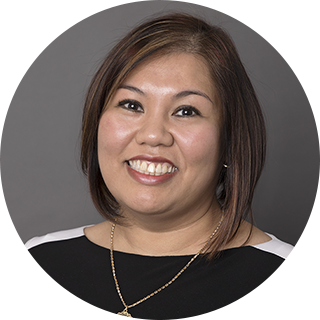
The following excerpt is posted from an article originally published on SDG Action.
We will only fully understand the inequality experienced by women, girls, and other vulnerable groups if we collect the data. Despite recent progress, much of the gender-disaggregated data needed is still missing.
Disaggregated gender data matters in leaving no one behind
Disaggregated gender data is critical for putting the spotlight on inequality and underscoring the need to realize the rights of poor and marginalized women and girls whose rights are not always prioritized in policymaking processes. Take the case of Mongolia, where about 30% of the population are living a nomadic lifestyle (moving around the country to find the best climate for herding livestock). We need gender data that captures the specific needs and challenges Mongolian women herders face because of environmental factors. Led by the National Statistics Office of Mongolia, with support from UN Women’s gender data programme, Women Count, a dedicated survey produced important statistical insights about the lives of the nomadic women herders that was not previously available in the country. The key factor here is intentionality – to make vulnerable groups counted and visible.
Making specific groups of women counted and visible
Improving data disaggregation is fundamental for the full implementation of the Sustainable Development Goal (SDG) indicator framework for Agenda 2030. A case in point is the gaping inequalities evident in science, technology, engineering, and mathematics (STEM) employment (SDG 9). Globally, women make up just 20% of science and engineering professionals. Gaps in STEM careers are larger for women doubly disadvantaged by the intersection of gender with other vulnerabilities. In the US, Black and Hispanic women in STEM jobs earn about USD 20,000 a year less than the average for STEM jobs and about USD 33,000 less than their white male counterparts.
The COVID-19 pandemic has compounded existing vulnerabilities faced by women and girls and threatened to further widen gender and socio-economic inequalities. UN Women research further finds that the reality for subgroups of women, such as among older women and women with disabilities, is even worse. Despite assumptions that greater health vulnerabilities would reduce older adults’ provision of childcare, UN Women’s rapid gender assessment (RGA) surveys reveal that more than half of older women reported increased domestic work (57%) and childcare (51%) – higher than among women aged 45 to 59 (50% and 44%, respectively). Despite the severe socio-economic impacts of the pandemic, women with disabilities with children in the household were less likely than their counterparts without disabilities to receive cash relief from government (12% versus 17%, respectively) or in-kind relief (13% versus 14%, respectively).
The availability of disaggregated gender data for specific groups of women will make it possible to inform and develop policies and programs that respond to their realities. Unfortunately, such data is not always available. On gender-specific SDG indicators alone, we only have 42% of the data we need (as of June 2022). There are 14 gender-specific indicators where no data has been reported for any country, including significant issues for women such as sexual violence, poverty, and employment.
Producing and using disaggregated gender data: a balancing act
Having valid and reliable disaggregated data that can paint a full picture of the intersecting inequalities experienced by women and men comes with a cost. It is more expensive to collect and takes longer to produce than aggregated data. However, we do not have the luxury of time, especially when women face a worrying multitude of overlapping threats such as the cost-of-living and global climate crises. We also do not have sufficient resources, as funding for gender data fell by more than 50% between 2019 and 2020. Not surprisingly, disaggregation is often limited, which means specific groups of women are left behind.
Given these constraints, prioritization of gender data needs – determined by intended data use – should be undertaken. For example, in Uganda, the ability to monitor the SDGs has significantly improved through the adoption and revision of the National Priority Gender Equality Indicators (NPGEIs) of the Uganda Bureau of Statistics, with UN Women’s support. The NPGEIs have been used as key monitoring and reporting tools, including in:
- annual SDG progress reports
- Uganda’s Third National Development Plan
- the UN Sustainable Development Cooperation Frameworks reports
- Uganda’s voluntary national reviews, which have seen gender data increase by 150% between 2016 and 2020
Some (disaggregated) information is better than no information at all
Support for the design of statistical strategies and targeted data collection instruments that adequately capture the realities of disadvantaged groups, including hidden or hard-to-reach groups – while ensuring ethical standards – is of utmost importance. As we capture the diverse characteristics of women and men, inequalities between them and the specificities of different groups of women and girls, precision, accuracy, and reliability of gender data becomes a concern.
Towards this end, UN Women has produced a Counted and Visible Toolkit that provides a simple framework to follow in deciding if and how to publish disaggregated gender statistics. It promotes:
- transparency of gender data producers in publishing disaggregated data with the corresponding limitations
- empowering gender data users to have access to disaggregated data, to appreciate the strength (or weakness) of the data, and to decide what could or should be used.
For the full story, go to SDG Action.




